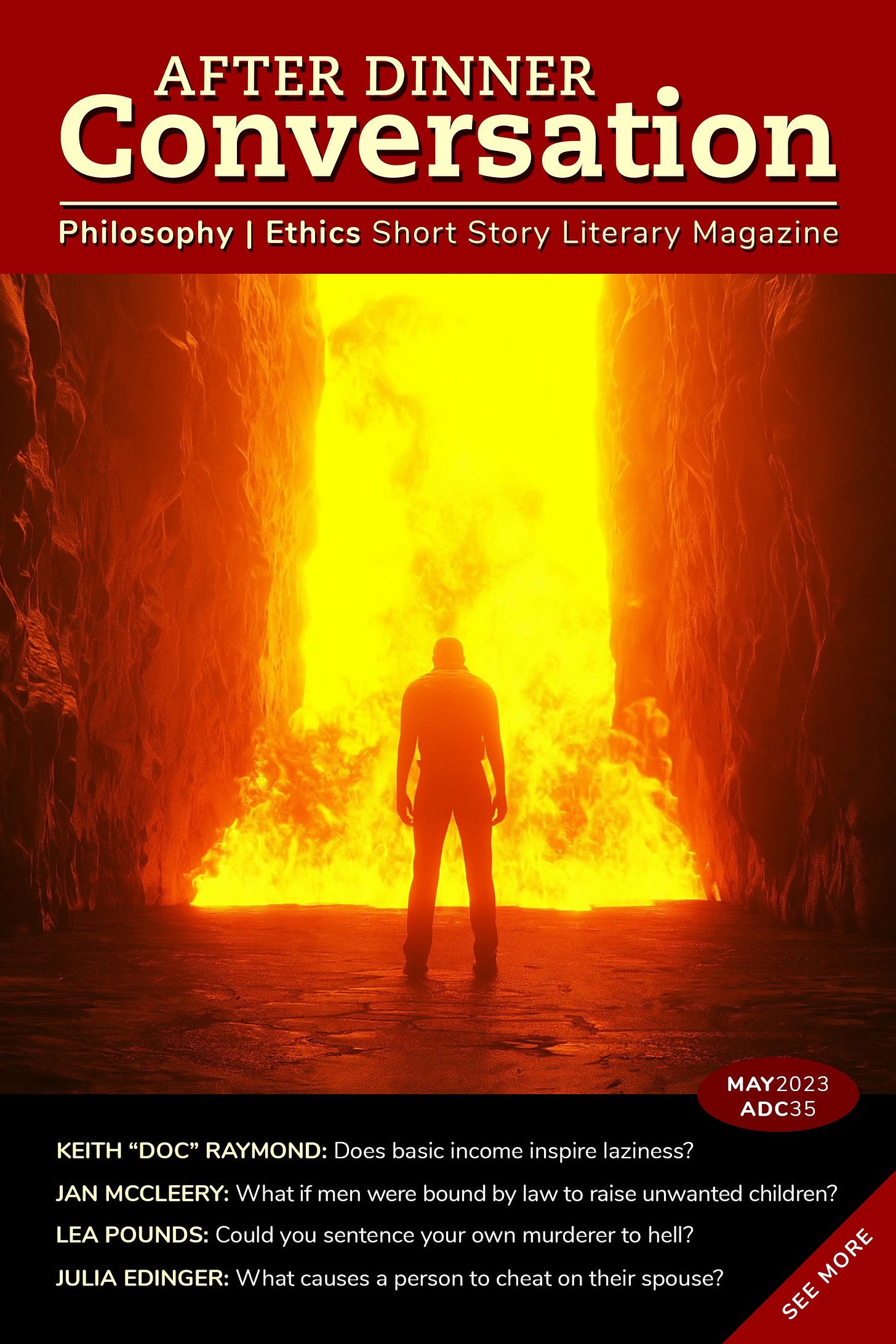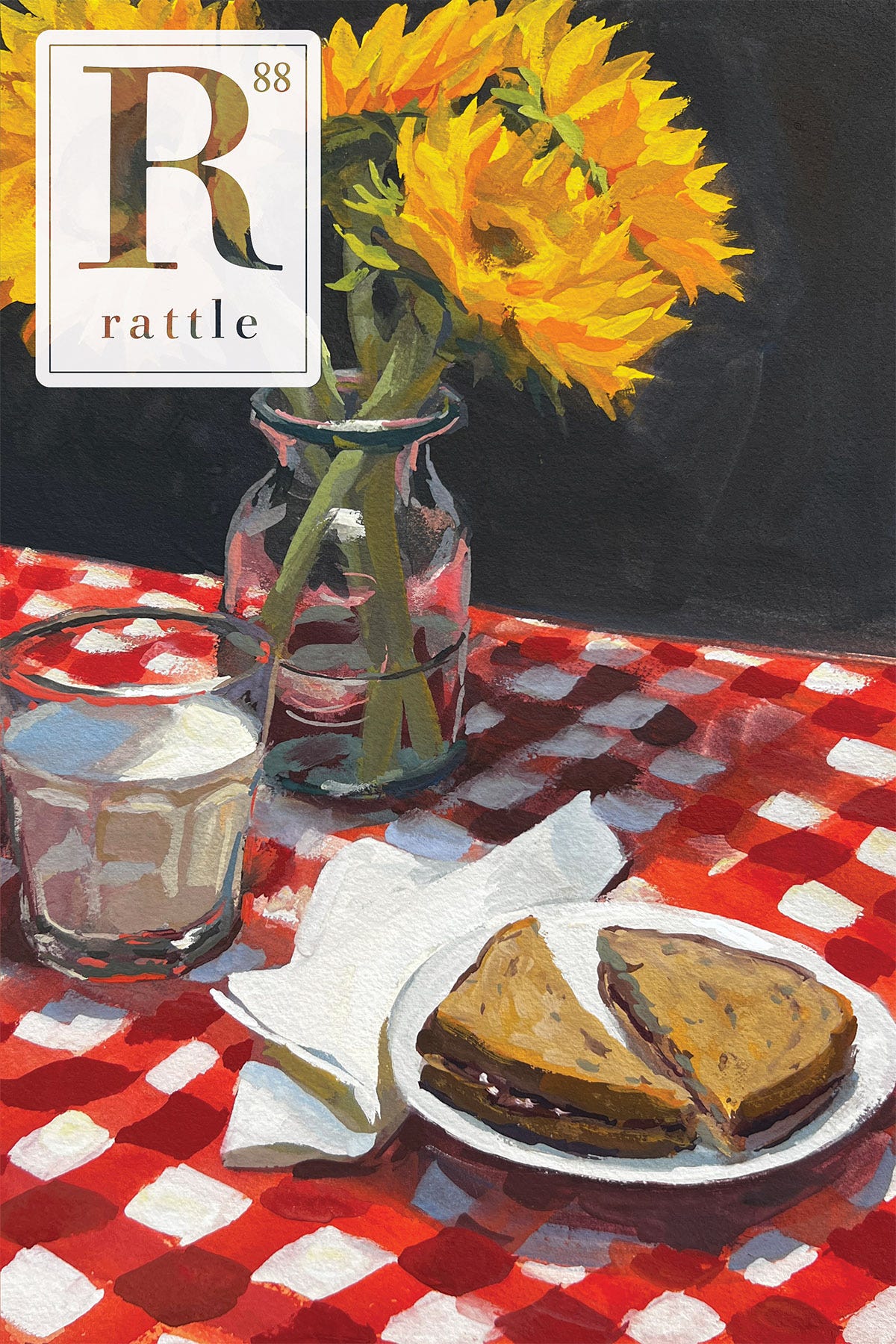Who Reads Lit Mags? We Do! Spotlight on Buckman Journal, Brink, Streetcake, After Dinner Conversation, Beestung, & Rattle
"...how much room there still is to experiment within the lit mag world."
Welcome to our weekly column offering perspectives on lit mag publishing, with contributions from readers, writers and editors around the world.
Hi, all. Jessica here. It’s the first Thursday of the month, which means we all get to share what we’ve been reading in lit mags!
As always, I’ve been keeping a list of all works mentioned in this series, including works shared in the comments section, which you can find right here.
A few days ago, I went to a party hosted by Buckman Journal to celebrate the release of their new book, Odd Guide to the Flowers of Portland, a gorgeous poetic field guide created by the Buckman staff that reimagines flowers through playful descriptions and artistic interpretations. I had read an excerpt of the book in Buckman’s January 2025 issue, “Preserve & Decay,” and loved every sentence.
One thing I really appreciated about the party was how welcoming it felt for introverts. Along the walls were vases of flowers, each paired with paper and pens, inviting guests to name the flora (my personal favorite was “fairy dress” for a stalk of cup-shaped green blooms). It was an overall exciting event that was a reminder of how much room there still is to experiment within the lit mag world.
One magazine that inspires the spirit of experimentation is Brink Literary, which focuses on works that blend writing with visual and multimedia elements. Their website feels like an invitation to explore new territory, especially thanks to the animation advertising their video essays. I’ve never considered video essays as a literary genre until this journal. The video essay “I Caught Fire for This by Sophia Paquette” particularly floored me. There’s no sound, but the text appears and disappears across the screen and somehow, through color, size, and timing, you hear the words anyhow. And the story is just so surprisingly good, I hope you all go watch it right now.
A poem published by Brink that made me feel fizzy with excitement is “Psilocybin Journey Notes” 10/27/22 by Subhaga Crystal Bacon. (What a name!) I have a love-hate relationship with drug writing, because the risk is producing a stinky pile of clumsy cliches about magic mushrooms. But this poem is a gem.
At first glance, it looks heavily redacted, with huge blocks of black swallowing up the text. This alone creates an interesting, effective poem. But if you highlight the blacked-out sections (like I did on a whim) hidden lines reveal themselves. It’s like two poems layered inside each other: the first, sprawling and diaristic, captures the kaleidoscopic chaos of a mushroom trip, and the second, revealed through erasure, pares that chaos down to its stark emotional bones:
Skull face with screw teeth. myself as a toddler trapped
It evokes that unsettling, reflective headspace for being on mushrooms, where time warps, memories resurface, trauma brushes against the edges of your mind, and there is this desperate, beautiful attempt to peel everything back and get at the truth beneath it all.
Here is the description of Streetcake on Chill Subs, a UK lit mag that has been around for almost twenty years and champions experimental, visual and outsider writing:
we want to be excited by your
writing, turned
on,
amazed by your images, Eyes darting
---------------- all
over the
page /
trying to
keep =
up, shocked, (shivering) with / uncertainty, smacked
over the
head by
the the the the
craziness of it-
if that sounds like you, then please submit!
I think any magazine that takes the time to turn their description into a poem is exactly the weird, chaotic place I want to send my work.
In their issue 95, published in March 2025, Grzegorz Wróblewski bestows an asemic piece that is incredibly intriguing. Asemic writing (I newly learned) is a form of mark-making that looks like language but isn’t actually decipherable, existing somewhere between poetry and abstract art. Wróblewski’s piece feels like a tangle of urgent, gestural lines, with some of the word-like images circled for emphasis, and red smears that eerily resemble blood. The effect is strangely intimate, and I kept conjuring up stories about a dying man’s last confession. It’s the kind of piece that allows you to make the meaning yourself.
Another lit mag that is doing something different in the best way is After Dinner Conversation. This time of year, I prefer reading print magazines outside in the sunshine, and I love that this journal’s text is the perfect-sized text (much larger than The New Yorker). But even better, After Dinner Conversation is also digital and can be accessed for free through many public libraries via Libby and Hoopla. I am especially drawn to After Dinner Conversation’s unique cover design. Each cover presents a series of thought-provoking questions that correspond to their stories, which serves an open invitation to engage and respond even before reading the works.
Would you revive a dead loved one?
Should horrible crimes be given horrible punishments?
At first, I mistakenly thought After Dinner Conversation published primarily nonfiction. But it is a philosophy and ethics short story magazine; each story poses a moral or philosophical dilemma, and honestly this blew my mind a little that the medium is all fiction.
One story that has stayed with me is “The Apath” by A.J. Parker, featured in issue 57 in March 2025. The corresponding question on the cover is: What if you could buy your emotions? That premise piqued my curiosity, and the story absolutely delivered and also provides even more questions and ponderings:
Who buys the bad emotions? That was the public debate, at first. The answer was simple. The ones who couldn’t afford any better.
A.J. Parker’s speculative, futuristic story where even the stars are artificial is a profound commentary on human experience and emotional privilege. I am in awe of how the author weaves philosophy into a short story without getting bogged down with too much heavy-handedness. The story provides sensory details, like the scuffs in the floorboard, and allows the deeper questions to emerge naturally through our main character, Finn, who is somehow so likeable despite being emotionally removed.
At the end of each piece, After Dinner Conversation provides discussion questions to prompt deeper engagement, and for those interested, they host an online discussion group through Meetup. It’s an exceptional model for how fiction can inspire critical thinking and community dialogue beyond the page.
A similar spirit of connection and community defines beestung, a lit mag that describes itself as a “micro-magazine” devoted to work by trans, nonbinary, gender queer, two-spirit writers that is “sweet and stings.” As you read through the stories and poems published in beestung, the lovely honeyed yellow background hums beneath the words, like sunlight filtering through paper.
A story published in beestung I am in awe of is “There Must Be Good Honest Sins” by Kit McGuire, because what a title, right? A nod to the contradictions and inevitable desires that haunt queer lives. The story’s structure is fluid and untamed, and dysphoria surfaces in the narrator’s fractured relationship to mirrors, her body’s involuntary responses, and the ever-present poltergeist that trails her through the night. My favorite moments in this story are the blunt, declarative statements like: She’s hot. Poltergeist or not. It shows the narrator’s defiant self-image with no apology, even as she’s literally being haunted. The result is a story as unshakeable as the ghost that follows her home.
Lastly, I’ve been spending a lot of time reading Rattle, a lit mag that has so much to offer. I truly feel like it promotes poetry as an accessible form of art, especially because it reminds readers that poetry shouldn’t require a degree to be taken in by it. Just one of the ways they build community is through their Poets Respond series, publishing poems within the past week about current events as a way for poets to join the cultural conversation in real time.
A poem I personally found moving and essential in helping me get through a shocking, mind-numbing event is “The Library’s Roof is a Meadow” by Pamela Lucina Moss.
Every Sunday, their livestreamed podcast, Rattlecast, features the week’s Poets Respond reading their work, offering an even more intimate way to connect with the poem and the person behind it. What’s more, selected poets receive $100, making it so that their poems are not only celebrated, but valued.
Another thing I love about Rattle (there is so much to love!) is their Random Poem generator, a simple but brilliant feature that lets you discover a poem from their archives with just one click. It pulls work from any year of publication, offering a constant shuffle through their history and keeps even poems published over fifteen years ago alive, relevant, and read.
My favorite standout feature of Rattle is their Critique of the Week, where editors publicly workshop poems on YouTube and Facebook, offering honest, detailed feedback that demystifies what they look for in submissions. As it says on their website, “It’s hard to find honest feedback about work, but knowing how your poems are actually landing is more useful than any other advice a poet can get.” I wish more literary magazines would offer this kind of transparent critique (like Fairy Tale Review!) because it gives writers a window into the editorial process and the magazine’s particular tastes.
So, those are my picks. I can’t wait to hear what you all have been reading too.
As I’ve said in previous posts, please note that while I look forward to our Lit Mag Brags each month and seeing what and where everyone has been published, this is a resource for what we’re reading, not what we’ve written.
Feel free to share and all works from lit mags, and I’ll add them to the list!
What have you read lately?











All great inspirations! Thank you! rattle is one of my favourites. I dream of getting through the door. The critiques are a master class every time. Another one I like is The MacGuffin. So many good ones to read, so little time! Oh, and Only Poems, which I receive every day…and…;)
after dinner conversation is one of my favorites! great point about the font size, too. excited to dig into the other recommendations!